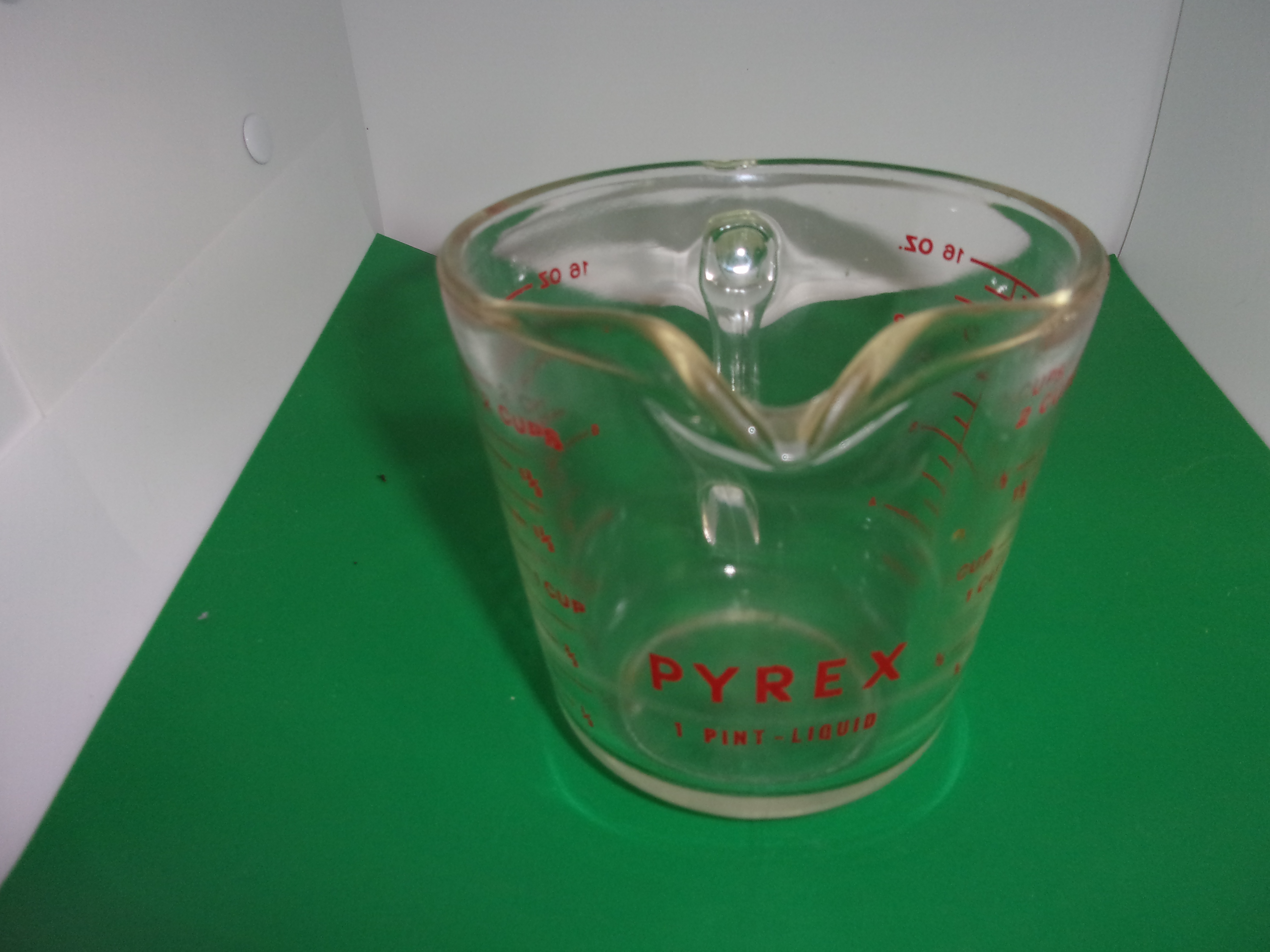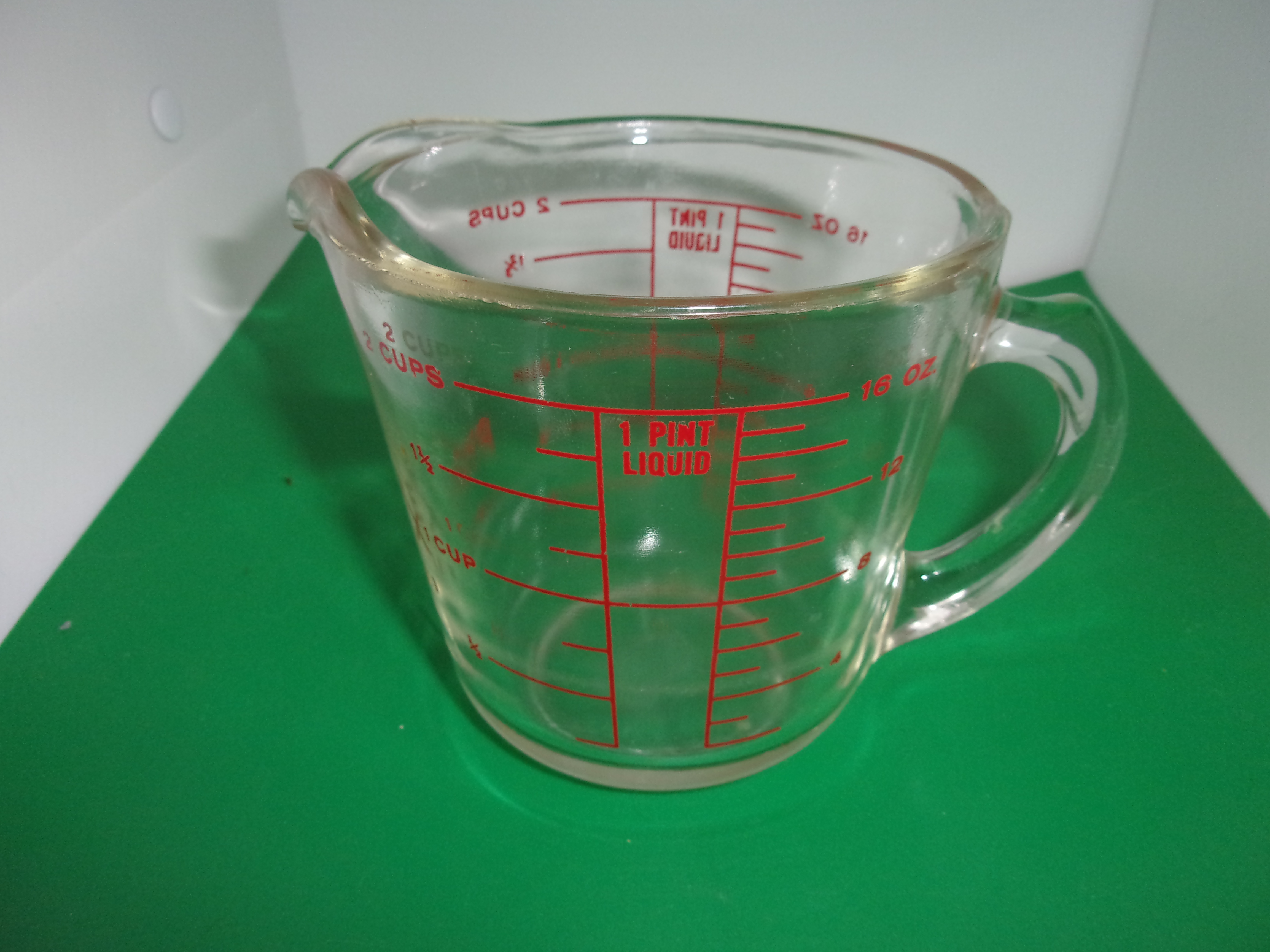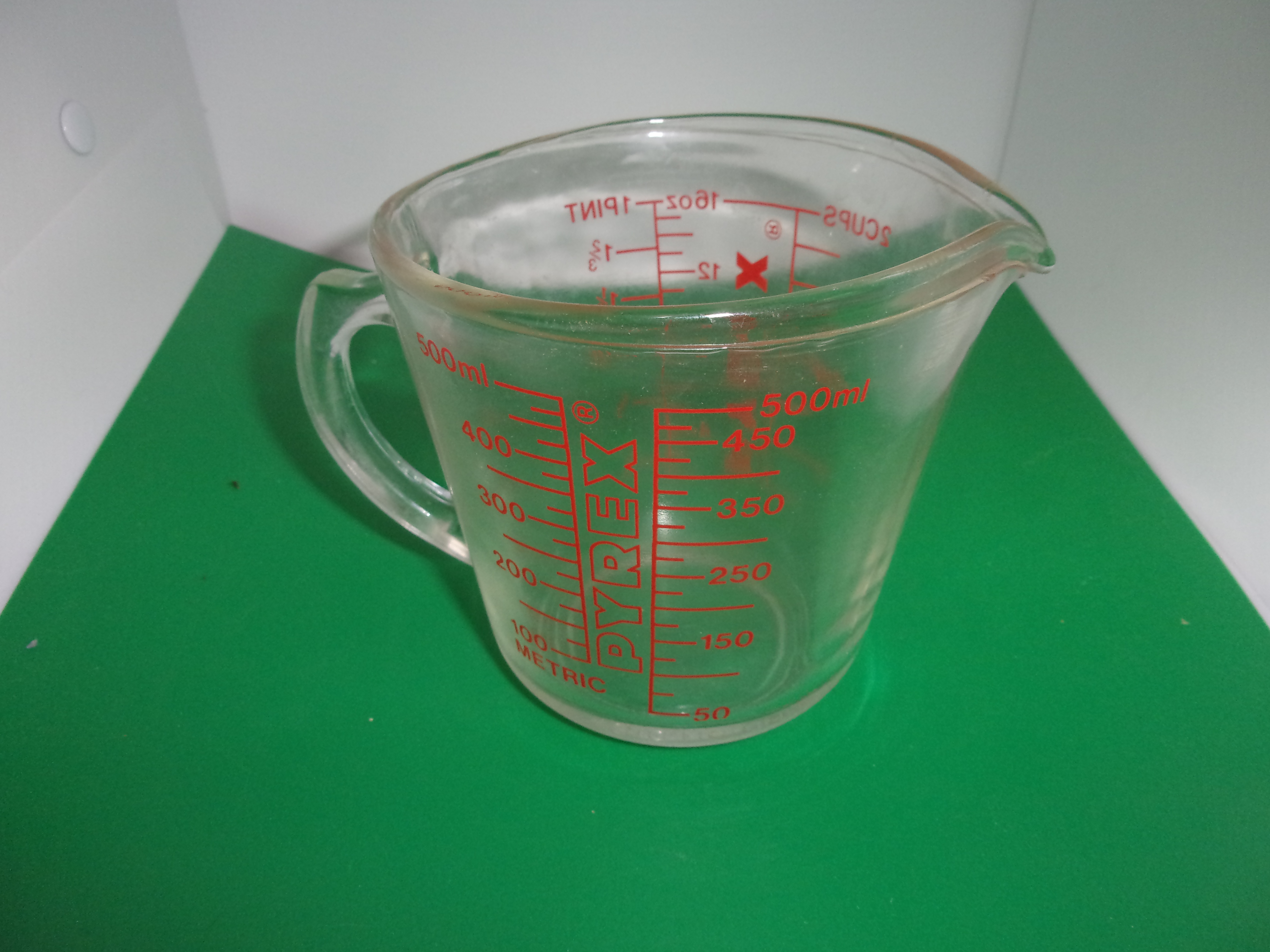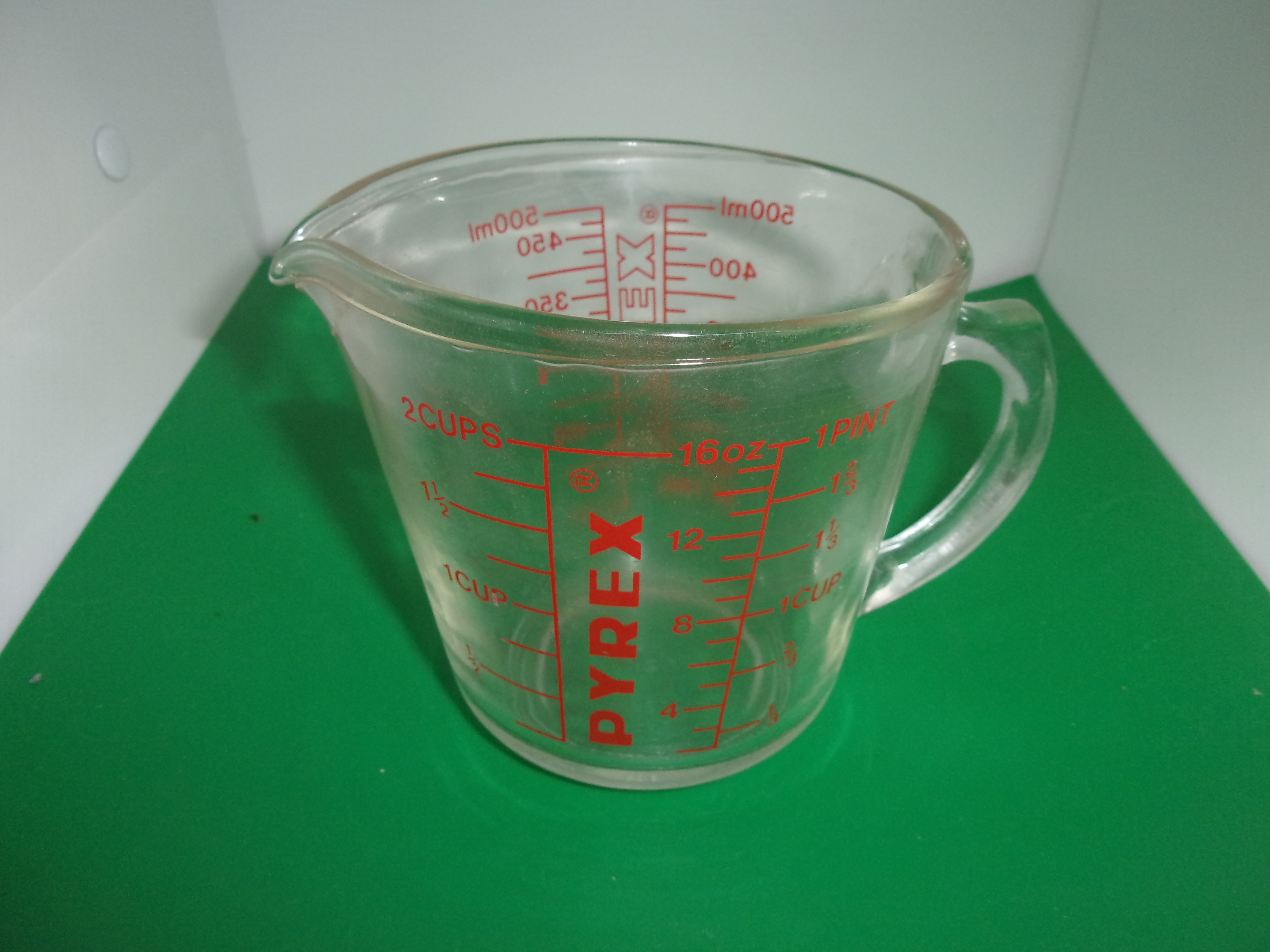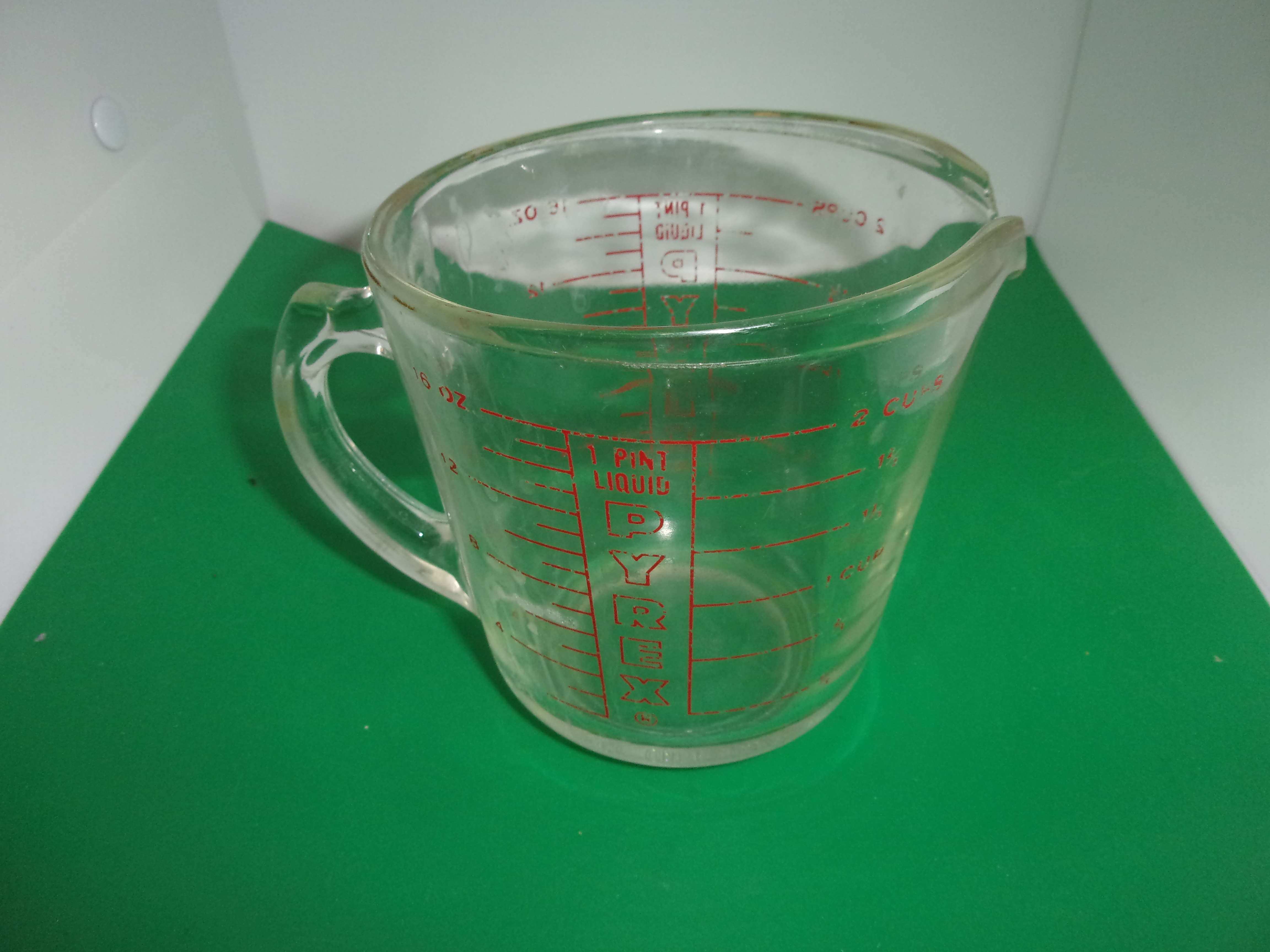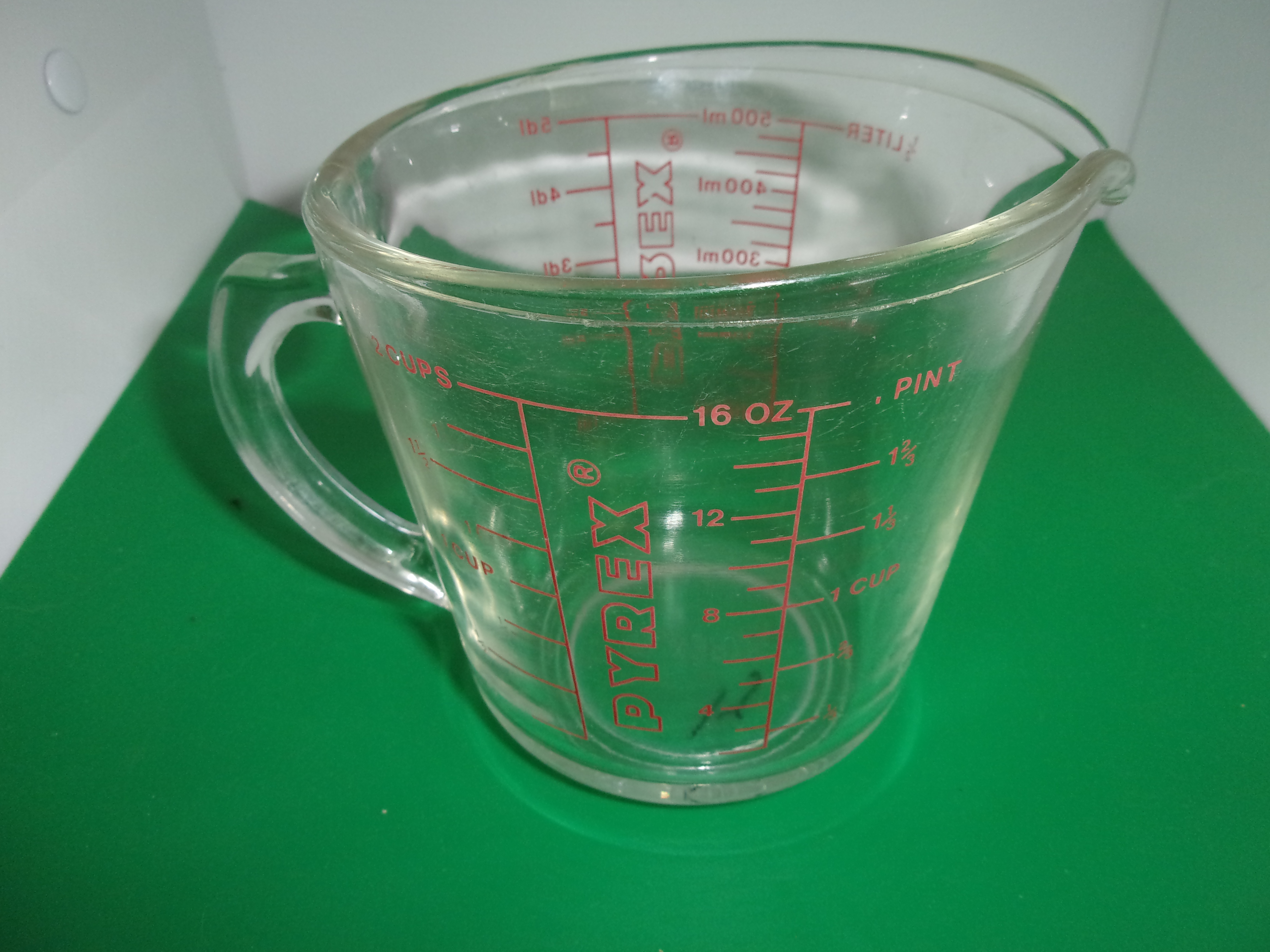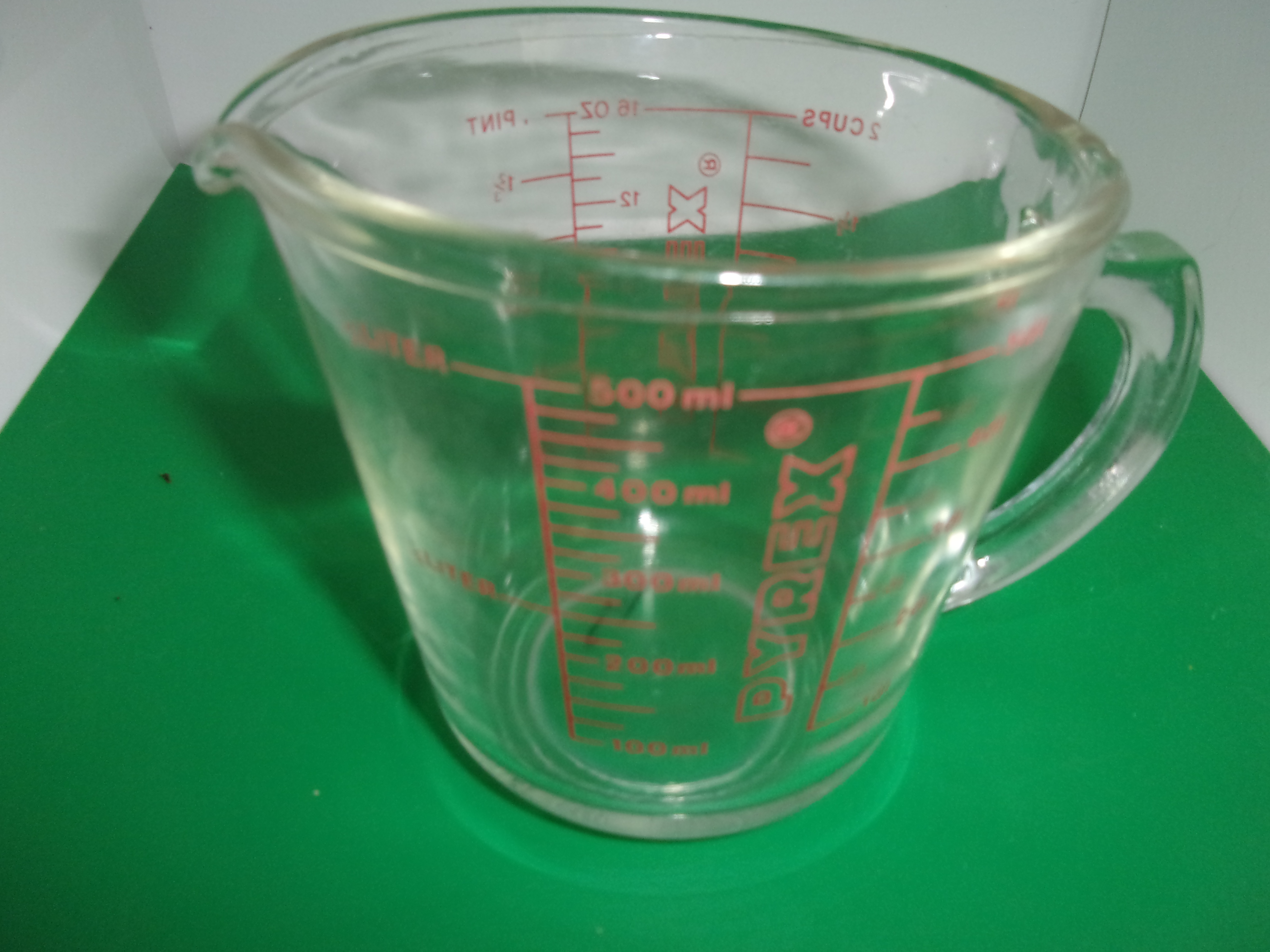I hope this will help provide information for other measuring jug collectors, if you have anything I can add please forward. to info@Barryeva.com
thekitchn.com/the-history-of-Pyrex-the-100-year-old-glassware-company
In 1908, Corning Glass Works started making Nonex, a thermally resistant “non-expansion glass,” for railroad signal lanterns and other industrial applications. This clear glass moved into the kitchen through the efforts of Corning employee Jesse Littleton. As the origin story goes, he brought a sawed-off battery jar home to his wife Bessie, and she used the shallow mold to bake a cake.
Capitalizing on the fact that the domestic sphere could benefit from the glass's durability as much as the industrial world, Corning had a hit on its hands. By 1915, it was selling Pyrex pie plates, casserole dishes, and bakeware to the housewives of America. And despite the fact that people, hang onto their Pyrex pieces for a lifetime it’s still selling and making its way into homes.
The unique properties of the glass made it unlike anything else on the market — it was able to withstand temperature changes, didn’t discolor, didn’t react with ingredients to change the taste of food (like cast iron), didn’t retain food smells after washing (like ceramics and earthenware), and because the original Pyrex pieces were see-through, bakers could watch the sides of their cakes, pies, and casseroles turn golden-brown as they cooked.
In 1936, Corning bought a glass factory in Charleroi, PA, just outside of Pittsburgh, which had the capability to produce colorful opal glass — a tempered opaque glass with the same heat-resistant properties as the clear glass coming out of Upstate New York. Again, although this opalware was originally used on an industrial scale (to outfit military mess halls during World War II), the technology trickled into the home kitchen with the release of the iconic primary-colored Pyrex nesting bowls in 1945.
MEASURING CUPS
In 1942 there was a one cup dry and one cup liquid available, and a one-pint liquid were available. The one cup dry measuring cup No. 18 had no spout, but now offered easy to read permanent red markings that we know today.
1940's DRY MEASURING CUP
The front of the cup has "1/3" and "2/3" cup markings and the words "PYREX" (in capital letters) and "1 Cup 8 Fl. Oz", "Level Full". The latter refers to the fact that unlike the wet measuring cup, there is no marking for the full capacity, i.e. 1 cup. You must fill it up level to the top to get the 1 cup measurement. Because of this, the dry measuring cup is a little smaller than the wet measuring cup.
PICTURE 1 shows a cup which is slightly thicker than shown in PICTURE 2. The handle is less developed with the second picture showing slightly more curve along with the slight bump at the top end of the handle which became standard. Both are number 18 on the bottom, with the earlier one just showing "T.M REG PYREX U.S.A PAT OFF A-BB" at the bottom, while the later one has "T.M REG PYREX MADE IN USA OFF D-CC" and the message which became quite common "FOR GENERAL HOUSEHOLD AND PHOTGRAPHIC USE ONLY".
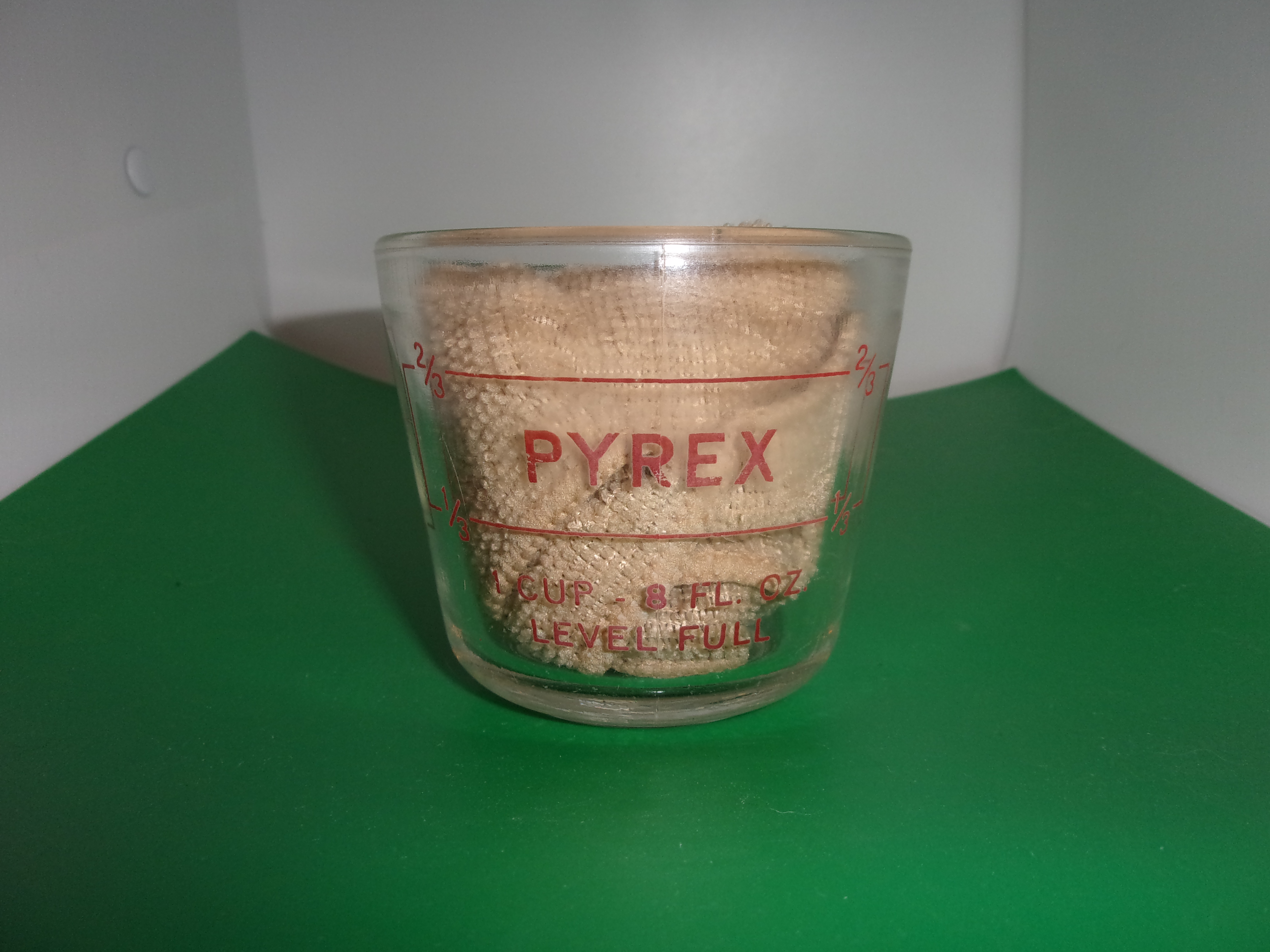
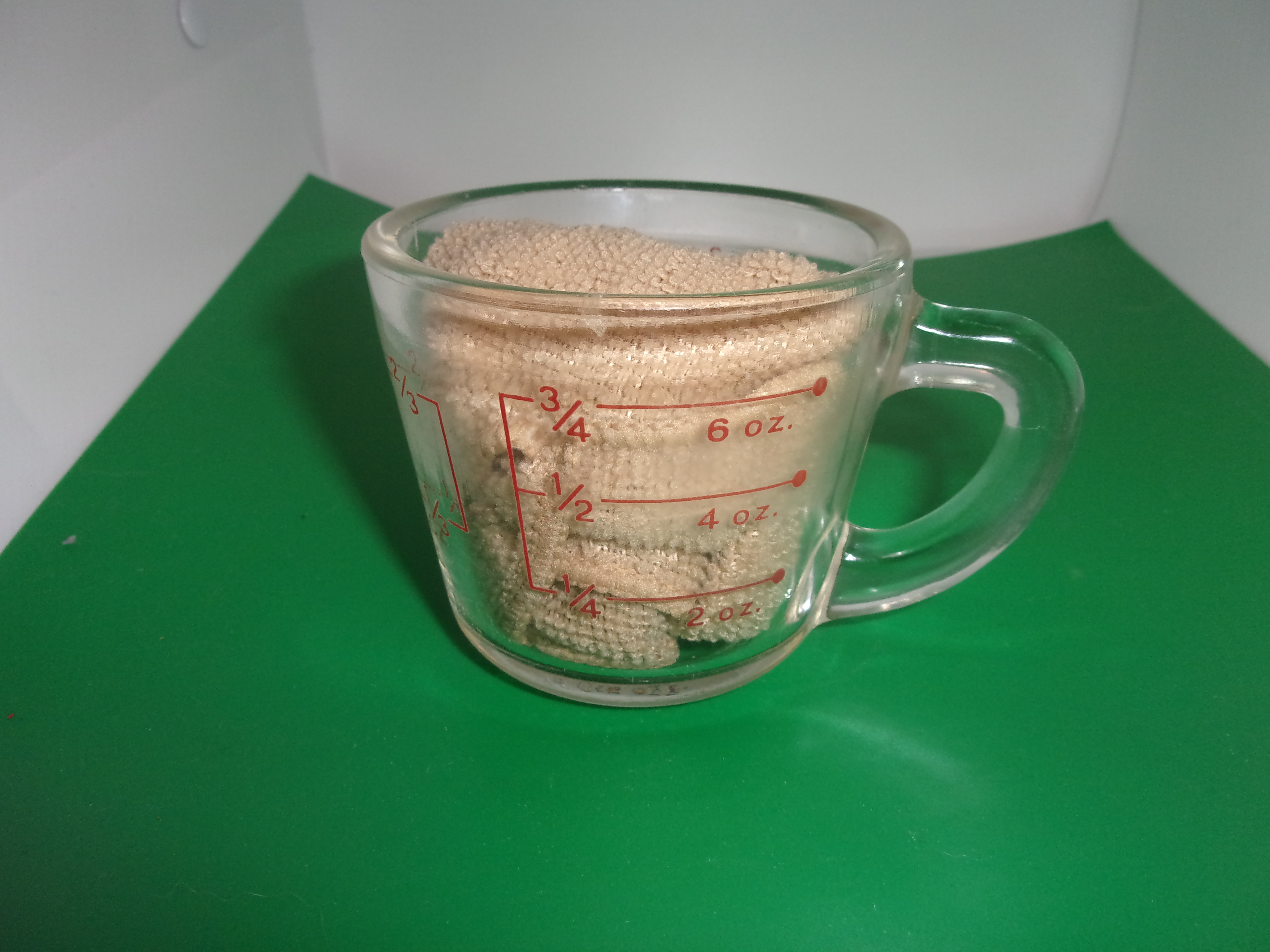
The second, which is
very much like the example from Pyrex Love, is much the same with smaller
writing font, thinner glass (2/16) note the slightly more curved
inner handle. It is labeled 18 D-CC with a message “For General Household and
General Photographic Use Only” this message has been used on several variations
of jug.


1940's WET MEASURING
CUP
The wet measuring cup (the spout indicates a "wet" measuring cup) was produced in the 1940's in 1 cup, 1 pint and 1 quart sizes.
The numbers are 508, 516 and 532 for those sizes respectively. The older models are non-metric and the writing is sometimes not "raised" or "incised"
into the glass (that is it is printed on it directly on the glass like the Pyrex Colors patterns).
As always, the first thing that will tell when you have a pre-1990 measuring cup by the handle - a "closed D" handle represents the older pieces.
The older versions as in PICTURE 3 as well as being just in non-metric also have the word PYREX printed across under the spout, whereas later on it
was moved to be printed down the side.
Here's an example of an older 516 2 cup/pint Liquid measuring cup:
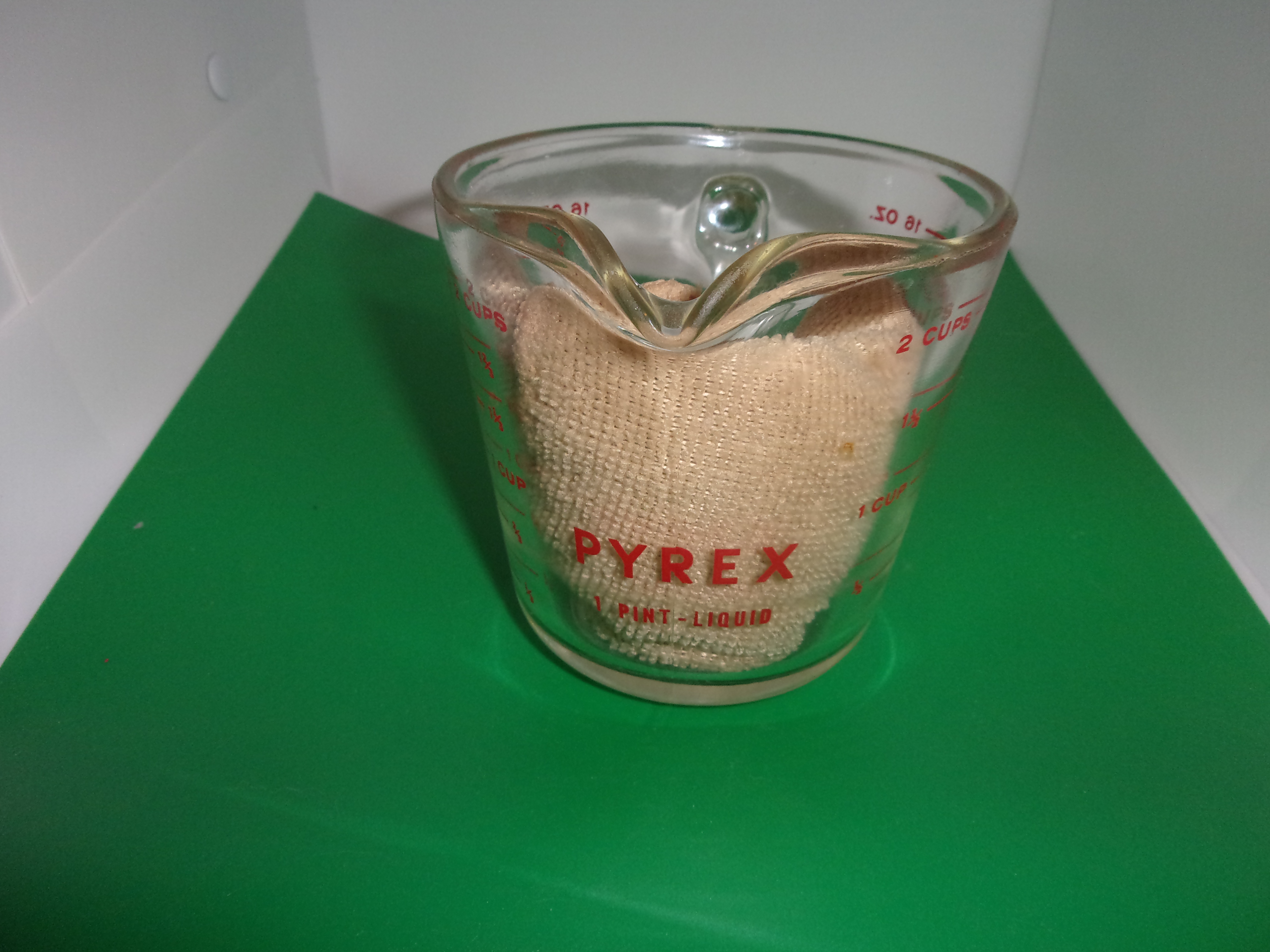
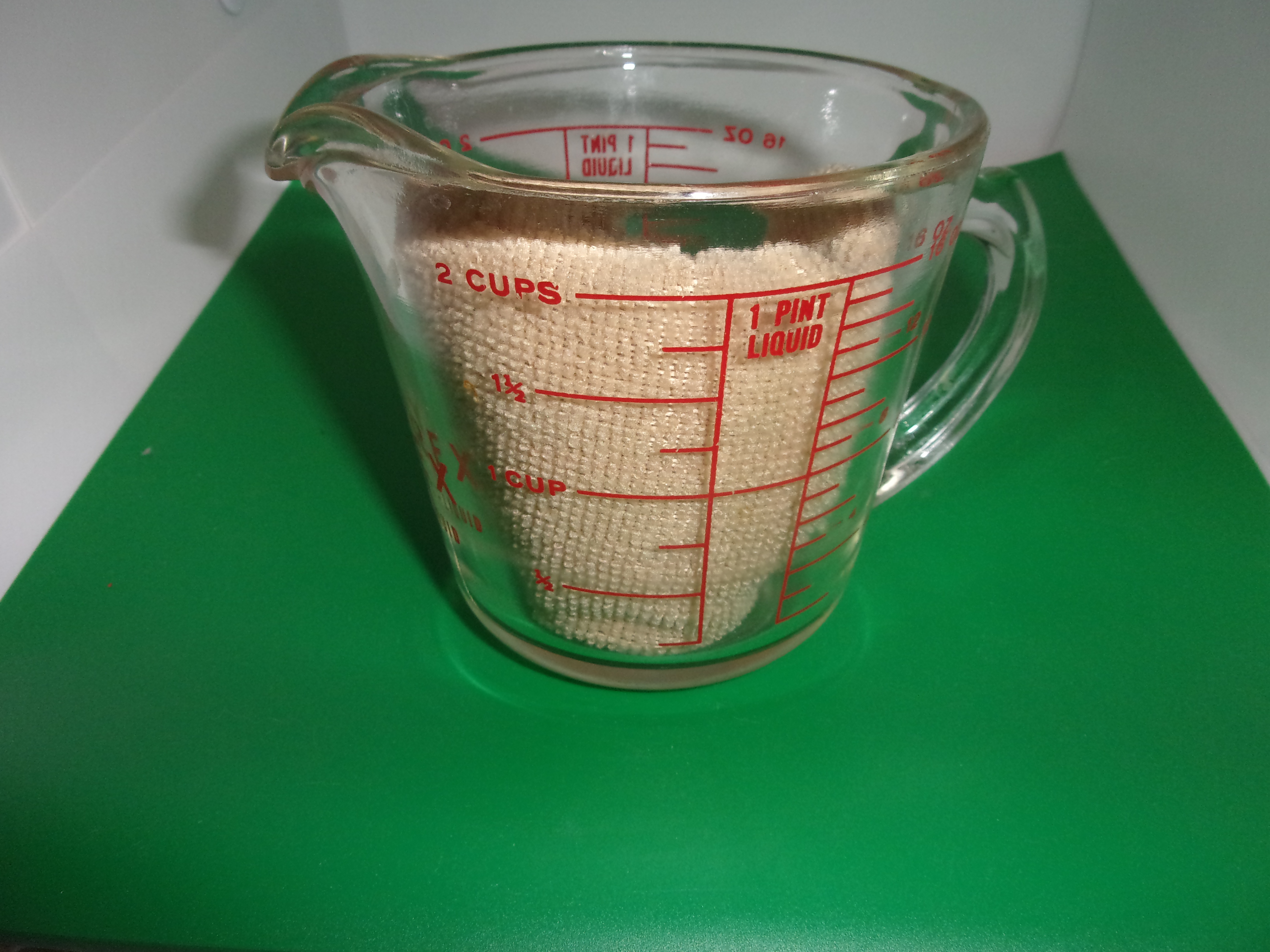
PICTURE 4: Shows a one cup with PYREX on the side, but still both sides non metric it is a K-4 (wish there was a list of those and what they mean re dates, I am trying to get that information still.
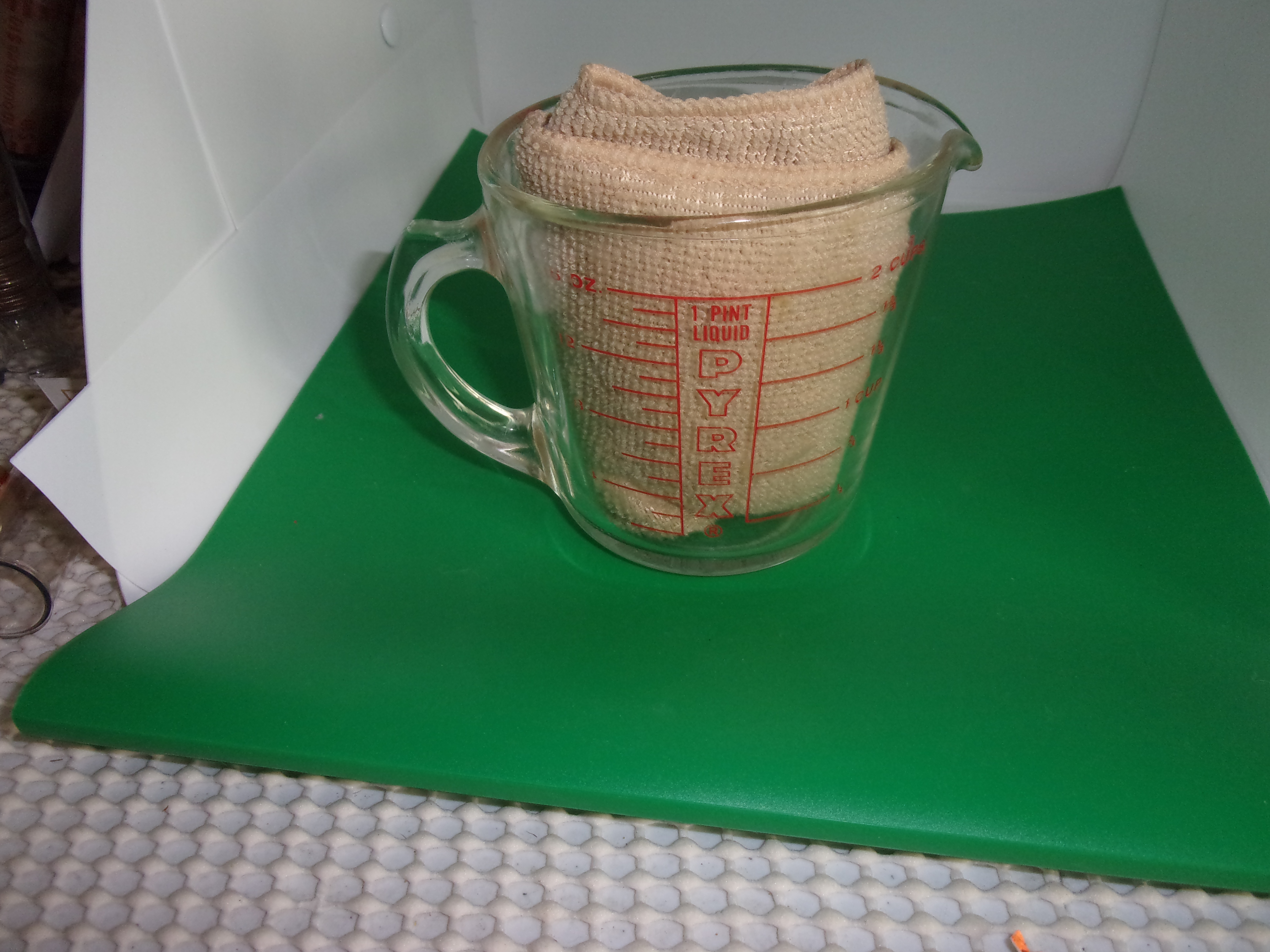
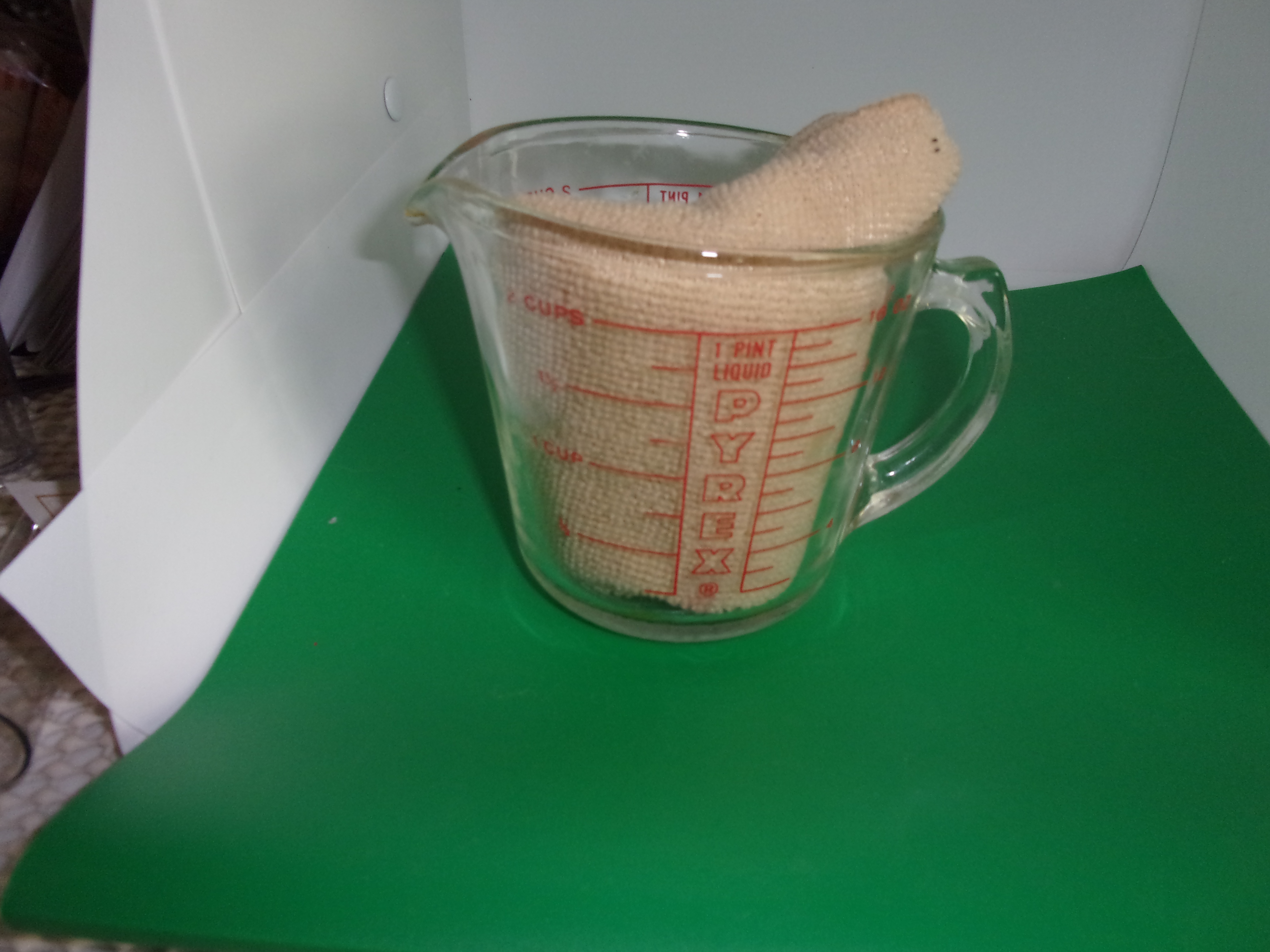

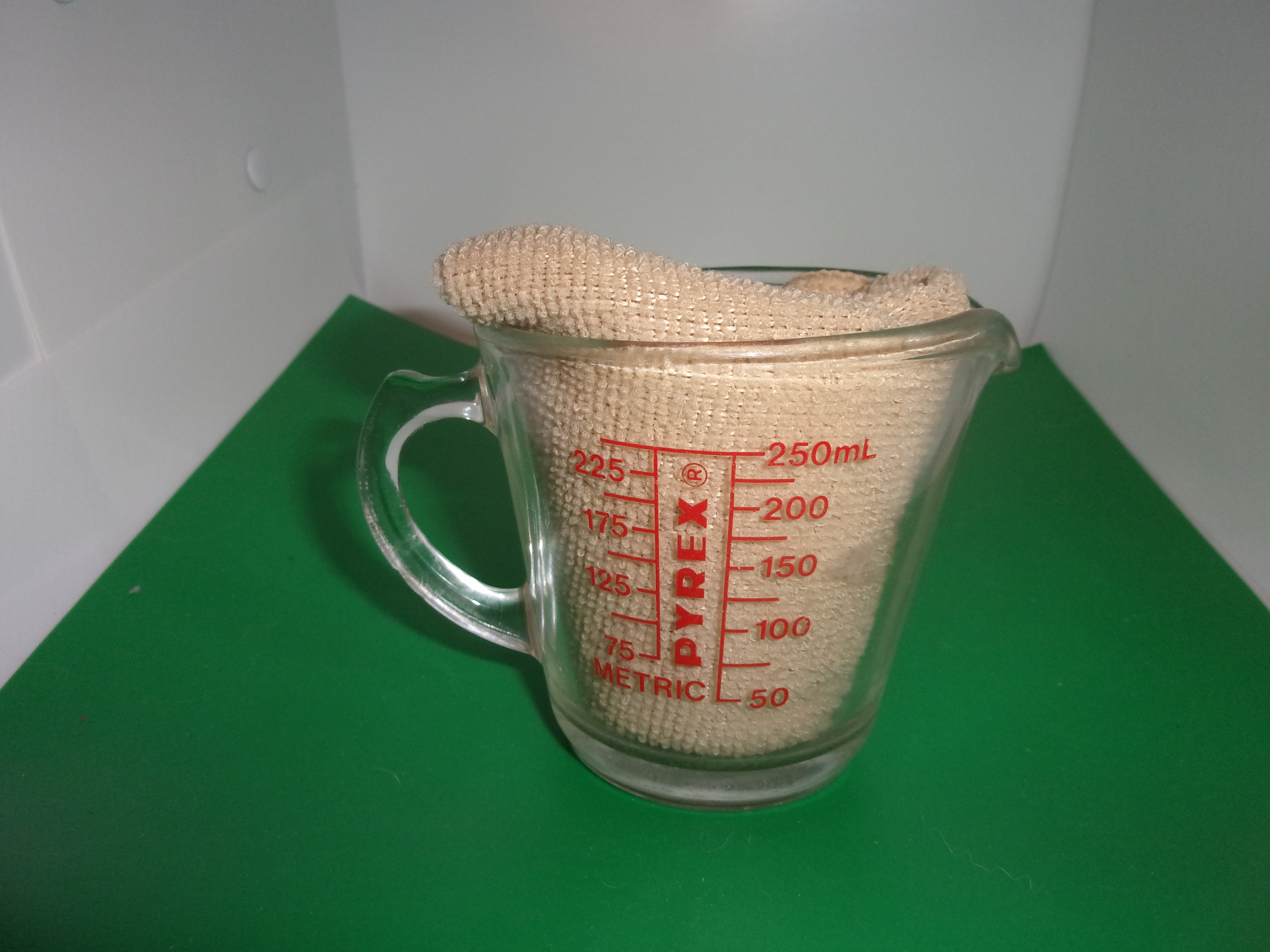


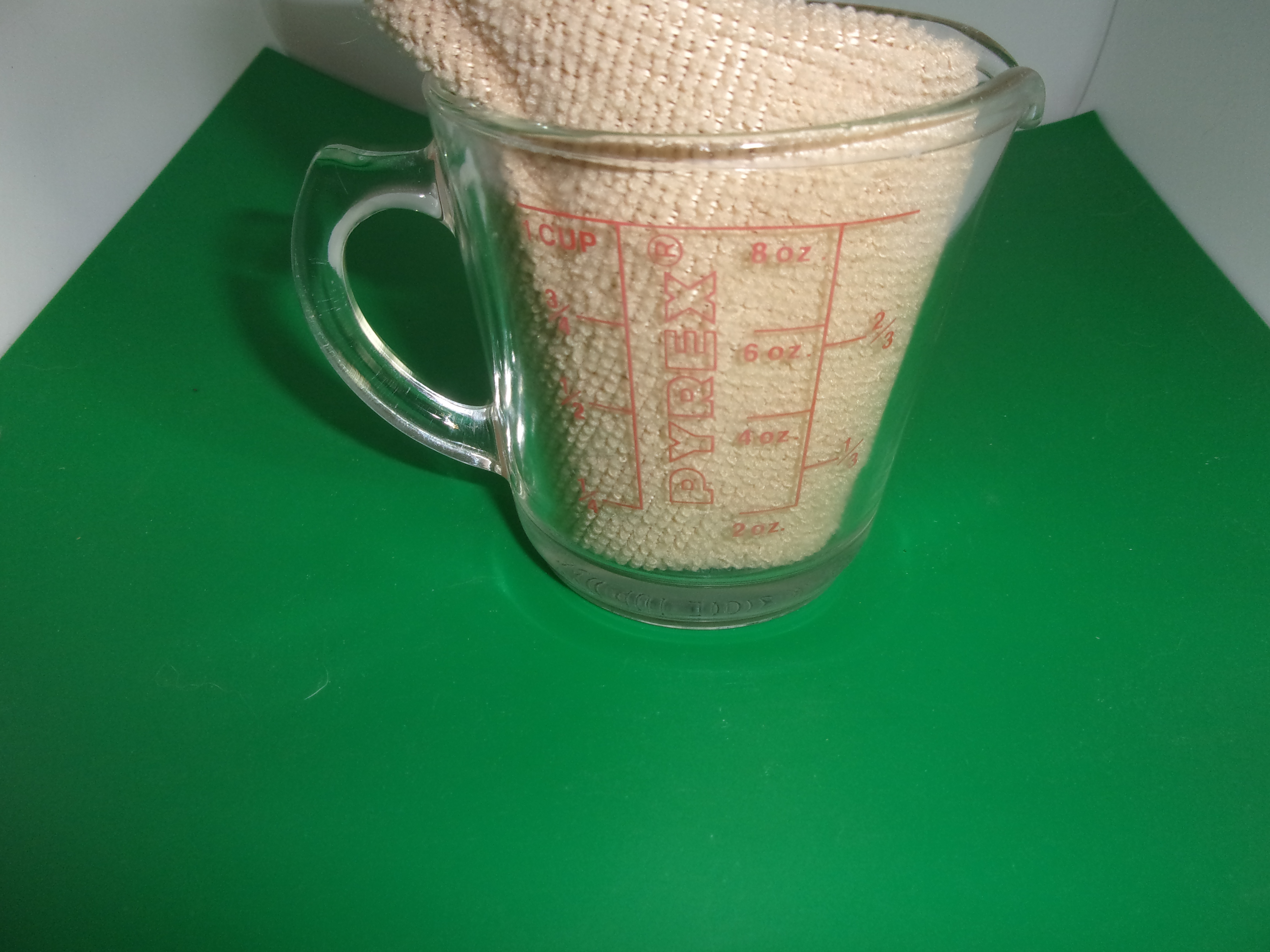
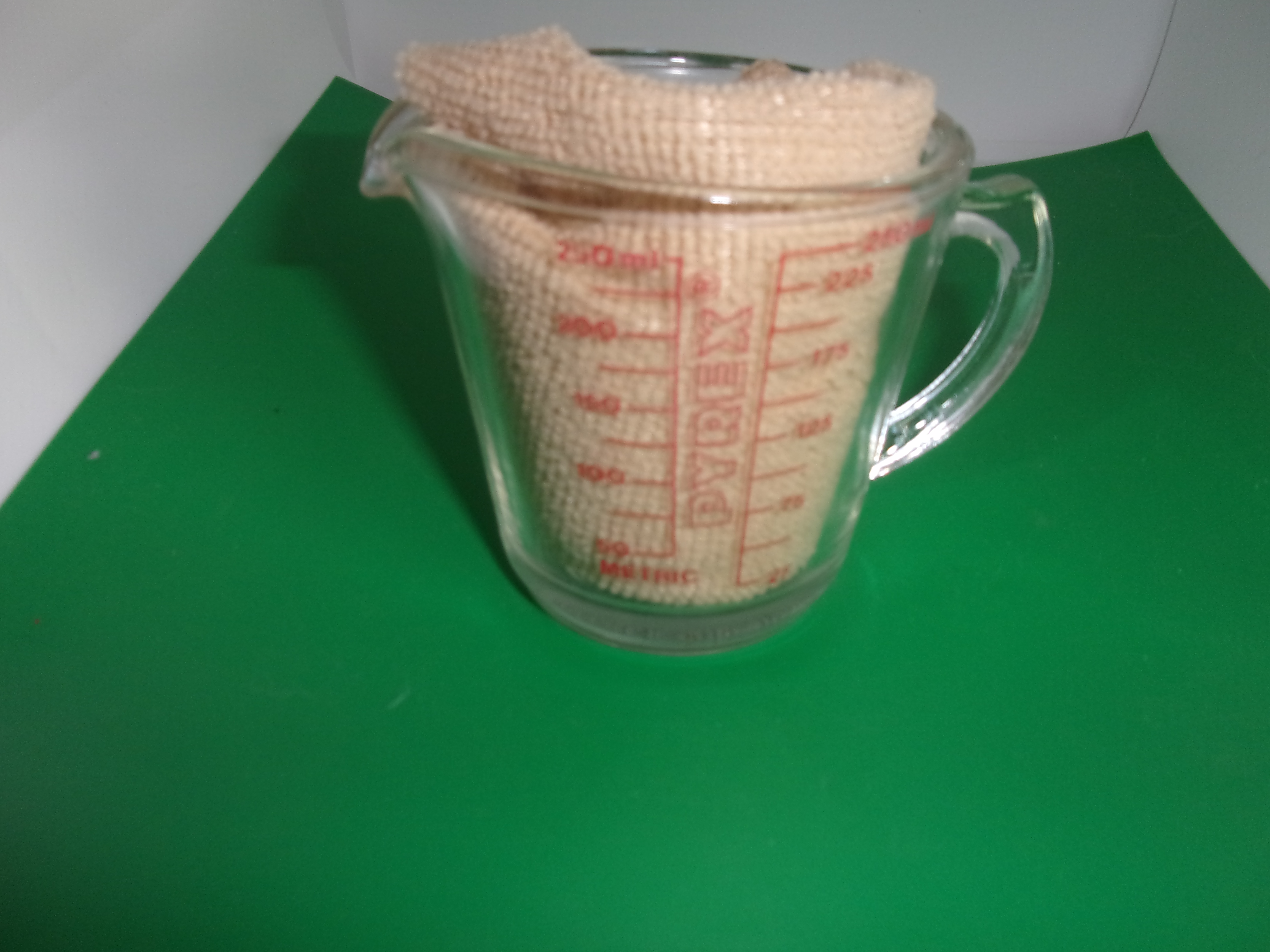
PICTURE 8:This is a type 516 referance H-6. It has the PYREX name down the front filled in and non-metrix measures on both sides with "Not for Lab or Stovetop use" on the base as well as just the trademark, and USA on the base.
